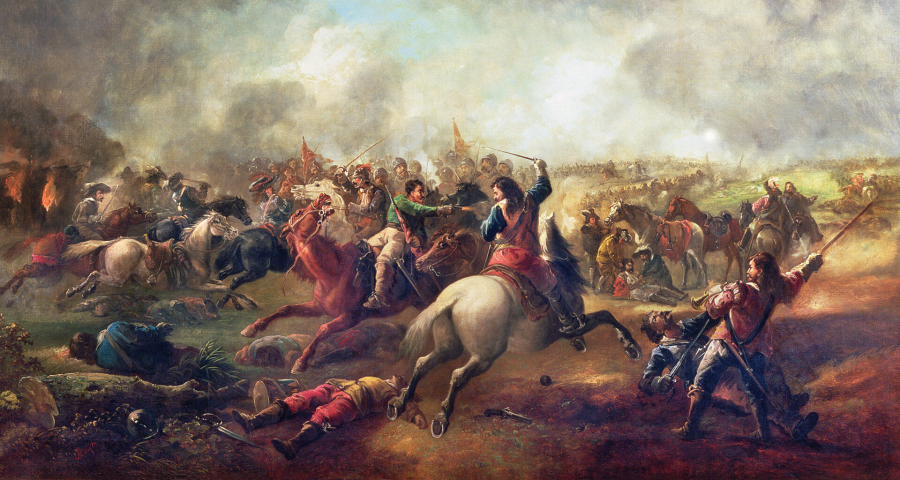A Christian Ethic of Property (Part 3)

'The great and chief end therefore, of men’s uniting into Commonwealths, and putting themselves under Government, is the Preservation of their Property.'
- John Locke, Second Treatise of Civil Government, 1690
'Property is theft!'
- Pierre-Joseph Proudhon, What Is Property?, 1840
It is no secret that Australia’s housing system is fundamentally broken. Rental affordability is the worst it has ever been. According to Anglicare’s most recent survey, just 0.2% of rental properties were affordable for someone on disability support pension, while nationwide there were just three (yes, three!) rentals that were affordable for someone on Jobseeker. Meanwhile, the number of Australians who own investment properties has almost doubled in the last decade, up to 2.2 million. One in three houses is purchased by an investor. These two facts are closely related. The gap between those who own property and those who do not is becoming stark.
The housing crisis is not some mysterious social affliction. Its drivers are well known, and we have watched the crisis steadily build over a quarter of a century. And yet no Australian government has showed any real will to take the necessary action. While politicians talk vaguely and mysteriously about ‘housing affordability’ they are loathe to do anything about the central fact of the housing crisis: property prices.
If there is a sacred cow at the heart of Australian politics, it is the maxim that property prices must rise. Every Australian Government, if they want to stay in government, must demonstrate their obedience to this doctrine.
The politics of property in Australia has its roots centuries back in post-Reformation England. In this article we shall trace the origin of modern secular ideas of property and consider some of the primary Christian challenges to these ideas. I hope to show that, unbeknownst to many Christians, Christianity has within itself significant intellectual resources to furnish a coherent and powerful critique of the established order, as well as to imagine alternatives to it.
Parliament and property
In October 1647, there was a remarkable moment during the bitter and bloody English Civil War, in which the leading protagonist of the ‘Parliamentary’ cause (against King Charles I)—what was called ‘The New Model Army’—sat down at St. Mary’s Church in Putney, on the south side of the Thames, to have a political debate within itself. The radicals within the army, known as ‘the Levellers,’ were advocating that the new political regime should look something like our modern understanding of democracy. Speaking for the Levellers, Thomas Rainsborough declared,
...for really I thinke that the poorest hee that is in England hath a life to live as the greatest hee; and therefore truly, Sir, I thinke itt’s cleare, that every man that is to live under a Governement ought first by his owne consent to putt himself under that Governement; and I do think that the poorest man in England is not at all bound in a strict sense to that Government that he hath not had a voice to put Himself under.
The leadership of the army, headed by Oliver Cromwell and Henry Ireton, were deeply alarmed at these sentiments. Ireton asserted himself to restore some common sense into the debate:
no man hath a right to an interest or share in the disposing of the affairs of the kingdom... that hath not a permanent fixed interest in this kingdom.
By ‘permanent fixed interest,’ Ireton meant landowners. Ireton was expressing the widely held assumption that the purpose of parliamentary government was to represent property owners. The mass of tenants and wage earners in the land simply had no right to have a say in the affairs of government. This view was most famously encapsulated by John Locke’s political philosophy at the end of the seventeenth century when he stated that the ultimate purpose of government was the preservation of property. And when such thinkers talked of preserving ‘property,’ what they really meant was preserving a social order in which the masses of the populace were socially and politically subservient to an economic elite.
These are the ideas upon which the Westminster system of government that we have in Australia were founded. Such a conception of property developed in an England that considered itself to be unequivocally a 'Christian' society, and yet it bears little resemblance to the ideas about property found in the Bible or taught by the church for the first 1500 years of its existence, as discussed in the first two articles in this series. How did this come about?


The tyranny of property
The long term impact of the Protestant Reformation and (even more so) the religious wars of the seventeenth century, was that they shattered the moral and institutional authority of the church to speak into matters of economic life. In its place there arose a widespread spiritual individualism that privatised faith and tended to be blind to the social implications of Christianity. However, initially, the Protestant Reformation did little to unsettle the teaching of the Mediaeval Church on property. Martin Luther was an economic conservative who tended to oppose any form of economic innovation. John Calvin was more flexible in his thinking, but his economic instincts were towards collectivism and against individualism (for more, check out MannaCast ep. 19).
Ironically, the seeds of changing ideas about property were sown before the Reformation and within the Roman Catholic Church itself. The Franciscans were a mendicant order who were known for their radical rejection of property, but in their efforts to critique property (and defend their own position) they began to revert to the old Roman idea of property as a right of sheer power (dominium). To be clear, they were rejecting such a position, but their unequivocal rejection of property led them to talk about it in far less constructive terms than had their contemporary, Thomas Aquinas (see previous edition).
A couple of hundred years later, the Franciscan conception of property was picked up by thinkers seeking to grapple with the challenges of the new commercial world of the sixteenth century, leading them to describe property in terms of individual rights that form the basis of market interactions. This combined with the new spiritual individualism of the post-Reformation age to completely erase earlier ideas about the social function of property. By the beginning of the eighteenth century, property was conceived as an absolute right possessed by an individual, and held against the rest of the world.
Eighteenth century England was marked by an increasing concentration and hardening of property rights in the hands of ‘the landed interest.’ There is little appreciation today of the extent to which the English aristocracy of this period exercised an almost complete tyranny over local government and justice, to an extent that exceeded that of feudal times. With a growing divide between the propertied and unpropertied, and increasing desperation amongst landless labourers, ‘the landed interest’ used its domination of Parliament to develop criminal law in England around a vigorous defence of property rights. Over the course of the eighteenth century, the number of ‘offences against property’ that attracted the death penalty grew to over two hundred. By the early nineteenth century, this reached the absurd position that a man might be imprisoned for murder while a child was sentenced to death for pickpocketing a kerchief from a gentleman’s trousers.

By the early nineteenth century ... a man might be imprisoned for murder while a child was sentenced to death for pickpocketing a kerchief from a gentleman’s trousers.
The radical reaction

It is not surprising then that, in the nineteenth century, when people began to imagine a serious challenge to the established social order, they focussed their attention on the power of property. Responding not just to the tyranny of the rural aristocracy, but also the depredations of the Industrial Revolution and a new breed of property owners, social dissent was beginning to gather together under the vague catchcry of ‘socialism.’
In 1848, Karl Marx and Frederick Engels published The Communist Manifesto just as a wave or revolutions and revolts was beginning to spread across Europe. Announcing that ‘A spectre is haunting Europe – the spectre of communism’, they went on to explain: ‘the theory of the Communists may be summed up in the single sentence: Abolition of private property.’ Anticipating the disbelief at such a statement, they further explain:
Do you mean the property of petty artisan and of the small peasant, a form of property that preceded the bourgeois form? There is no need to abolish that; the development of industry has to a great extent already destroyed it, and is still destroying it daily.
A few years before Marx and Engels published The Communist Manifesto, Pierre Proudhon, known as ‘the Father of Anarchism,’ proclaimed ‘Property is theft!’ and ‘Property is impossible’. People still argue about what Proudhon actually meant in his enigmatic writings, however there is little doubt that the combined effect of the writings of the likes of Proudhon, Marx, and Engels, was to lead many to assume that the goal of ‘socialism’ must be to get rid of property rights. Indeed, that is still the dominant understanding of ‘socialism’ today.
Distributism and the Catholic Third Way
In 1891 Pope Leo XIII published his own manifesto in response to the revolutionary pressures that were building in Europe. Rerum Novarum (‘Of Revolutionary Change’) was the papal encyclical that launched the modern era of Catholic Social Teaching, and it sought to chart a way between the twin evils of revolutionary communism and unrestrained capitalism. Pope Leo’s vision of the social order re-articulated Thomas Aquinas’ understanding of the social function and responsibilities of property for a modern industrialised economy. Rerum Novarum foresaw the grave injustices that would be committed under Soviet and Maoist communism, and argued that maintaining rights of private ownership were indeed critical to welfare and dignity of working people. However, it also demanded that for this to be the case, there must be distributive justice within the structure of the economic system.
In England, Rerum Novarum inspired a Catholic intellectual efflorescence that made a bold contribution to the national political conversation, spearheaded by such literary giants as G.K. Chesterton and Hilaire Belloc. Belloc and Chesterton distilled the new Catholic Social Teaching into a social vision based upon a renewed conception of property in English society, which they labelled ‘distributism.’ At the heart of distributism was the idea that property rights, as such, were not the problem, but rather the concentration of property in the hands of few. They envisaged that a more socially just England required a much broader distribution of property across the population. Chesterton mischievously put it this way:


'A pickpocket is obviously a champion of private enterprise. But it would perhaps be an exaggeration to say that a pickpocket is a champion of private property. The point about Capitalism and Commercialism, as conducted of late, is that they have really preached the extension of business rather than the preservation of belongings; and have at best tried to disguise the pickpocket with some of the virtues of the pirate. The point about Communism is that it only reforms the pickpocket by forbidding pockets.'

'Thus the Socialist says that property is already concentrated into Trusts and Stores: the only hope is to concentrate it further in the State. I say the only hope is to unconcentrate it; that is, to repent and return; the only step forward is the step backward.'
Distributism sought the re-instatement of the small proprietor, in agriculture and in industry, as the dominant economic institution of England. Unfortunately, for all their rhetorical flare, the distributists had no program to develop distributism in detail or to advance their scheme in action and politics. Chesterton virtually boasted of his ‘ghastly ignorance’ of the economic facts.
R.H. Tawney’s Christian socialism
The vision of distributism found a much more sophisticated articulation in the work of economic historian, R.H. Tawney. Tawney was a deeply committed Anglican who described himself as a ‘socialist,’ and indeed was perhaps the leading British socialist thinker of the twentieth century. However, Tawney’s version of socialism was nothing like Marxist communism, but rather much closer to the Catholic social vision. Tawney agreed with Patristic and Mediaeval thought that considered property, like the state, to be an ‘accommodation to sin’: a necessary and providential way of structuring community that takes account of fallen human nature while safeguarding dignity and freedom. Tawney was critical of a conventional type of socialism that demonised all forms of private property. In contrast, he argued for strengthened rights in property, but re-founded an alternative moral basis to that of ‘individual right.’
Like the distributists, Tawney wanted to see property ownership much more widely distributed within English society, however, he had a much more sophisticated understanding of property and a much more intricate understanding of the functioning of industrial Britain. Tawney understood that what is commonly referred to as “the right to property” is not one thing founded on some eternal law, but rather a whole mix of rights that change over time to reflect the dominant social-political consensus. Different forms of property rights serve different purposes and have different social consequences. The question is not to defend or attack property rights in abstract, but rather to ask what kinds of property best serve the broadest social good within a given sector or industry.
Within industrial Britain in the period between the World Wars, Tawney identified nine types of property and placed them on a spectrum from the forms of property that serve the greatest social function (such as personal possessions, land, and tools) to forms of property that serve the least beneficial social function (‘improperty,’ such as mineral royalties and company shares). (Interestingly, he placed patent rights—intellectual property—reasonably high on his list. I suspect he might have a different view of the social function of intellectual property today.)
Tawney’s 1922 manifesto, The Acquisitive Society, offered a detailed vision of industrial Britain with recalibrated structures of ownership, in ways that would promote greater equality and dignity, while safeguarding economic and political freedoms. It advocated for a mosaic of ownership structures with small proprietors dominating in some sectors, larger private companies (but never too large) in other sectors, public utilities and state-owned enterprises in other sectors, and forms of cooperative and mutual ownership (including mixes of managers, workers, and customers) in others. Unlike some socialists, Tawney envisaged a more limited place for ‘nationalisation’ of industry. He was under no illusions that state-run corporations were magically fairer or more efficient; nevertheless, the market structure of some key industries suggested that state-ownership was the only viable way to pursue better social outcomes.


I believe that Tawney’s question is the right question for us to be asking again: what structures of ownership serve the most beneficial social purpose within any given sector?
Conclusion
In Australia today we live on the other side of a privatisation binge that sought to purge state ownership from most sectors of the economy. Now we have immense challenges decarbonising our energy supply and transmission systems, improving public transport, or providing affordable housing, all because these key sectors of social infrastructure lie in private hands. The current ‘cost of living crisis’ has brought back into the limelight the role of the supermarket duopoly of Coles and Woolies (currently the subject of parliamentary inquiry) in squeezing both producers and customers to extract record profits.
Currently, no political party in Australia offers a coherent vision of social, economic, and ecological renewal. If we are to develop such a thing, it must include a renewed moral vision of the place of property rights in underpinning the common good. I believe that Tawney’s question is the right question for us to be asking again: what structures of ownership serve the most beneficial social purpose within any given sector? This requires rejecting simplistic slogans and ideologies, whether for state ownership or the inviolability of ‘private’ rights, and thinking hard about where we are now and where we want to go.
Where will such a moral vision come from? Like Tawney, I believe that the Christian scriptures and tradition offer a treasure of resources for the renewal of such a vision. However, if there is to be anything like a renewed Christian political vision of property, then it must first be founded on a renewed Christian ethic and personal practice of property. That will be subject of the next and final article of this series.

